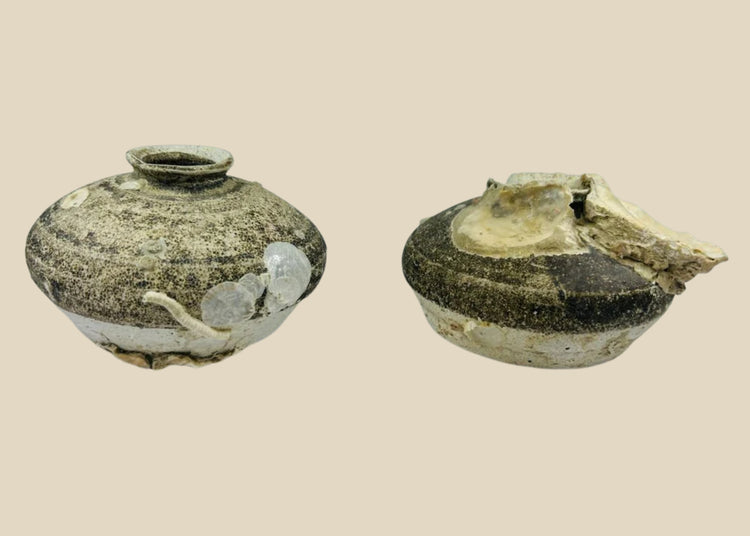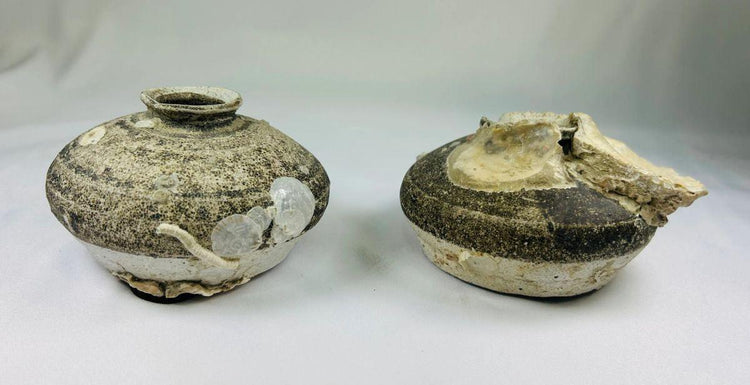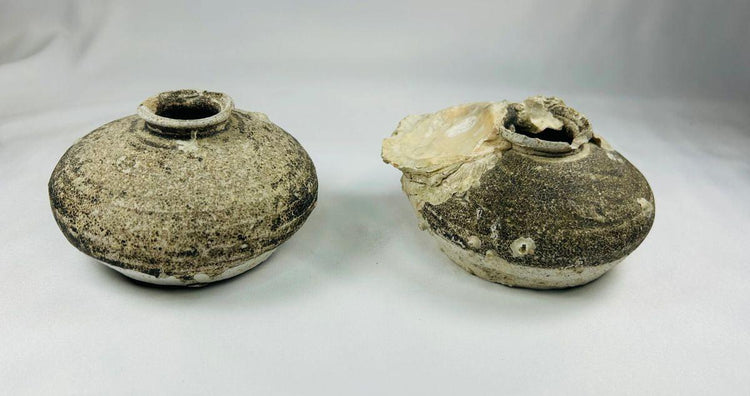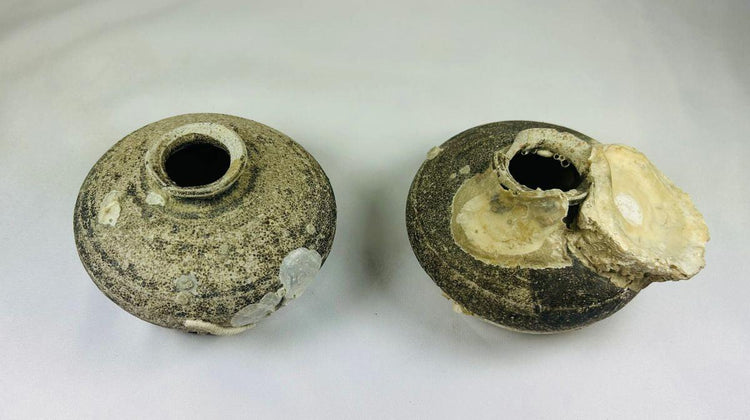Pair of Shipwreck Sawankhalok Jarlets | 1368-1644
Description
More
Less
Historical Context & Origin
Region: China, recovered in the Philippines (shipwreck context)
Material: Stoneware with partial brown glaze
Period: Ming Dynasty, 15th–16th Century CE
Description
This pair of Ming dynasty stoneware jarlets, recovered from a Philippine shipwreck, reflects the maritime trade networks that linked China with Southeast Asia. Each jarlet is crafted in discoid form with short necks and flared rims, displaying the classic utilitarian style of Ming-era stoneware. Their exteriors retain barnacle and mussel accretions from centuries at sea, adding a natural patina that enhances their authenticity and maritime provenance. One jarlet bears a label from the National Museum of the Philippines, further verifying its origin.
Features
- Discoid form with short necks and flared rims
- Partial brown glaze typical of Ming utilitarian stoneware
- Barnacle and mussel accretions from shipwreck recovery
- One jarlet with original National Museum of the Philippines label
Cultural Significance
Ming dynasty ceramics were highly valued across the maritime Silk Road, forming a crucial part of international trade. These jarlets, transported to the Philippines aboard trading vessels, embody the exchange of goods and culture between China and Southeast Asia. Their survival as shipwreck relics underscores the importance of ceramics as both functional containers and global trade commodities during the 15th and 16th centuries.
Condition
Both jarlets are well-preserved, with intact forms and surface accretions that attest to their long submersion. Their natural patina and encrustations contribute to their uniqueness as maritime finds.
Dimensions (approximate)
Height: 5 in
Width: 3 in
Age
Approximately 500–600 years old
Description
Historical Context & Origin
Region: China, recovered in the Philippines (shipwreck context)
Material: Stoneware with partial brown glaze
Period: Ming Dynasty, 15th–16th Century CE
Description
This pair of Ming dynasty stoneware jarlets, recovered from a Philippine shipwreck, reflects the maritime trade networks that linked China with Southeast Asia. Each jarlet is crafted in discoid form with short necks and flared rims, displaying the classic utilitarian style of Ming-era stoneware. Their exteriors retain barnacle and mussel accretions from centuries at sea, adding a natural patina that enhances their authenticity and maritime provenance. One jarlet bears a label from the National Museum of the Philippines, further verifying its origin.
Features
- Discoid form with short necks and flared rims
- Partial brown glaze typical of Ming utilitarian stoneware
- Barnacle and mussel accretions from shipwreck recovery
- One jarlet with original National Museum of the Philippines label
Cultural Significance
Ming dynasty ceramics were highly valued across the maritime Silk Road, forming a crucial part of international trade. These jarlets, transported to the Philippines aboard trading vessels, embody the exchange of goods and culture between China and Southeast Asia. Their survival as shipwreck relics underscores the importance of ceramics as both functional containers and global trade commodities during the 15th and 16th centuries.
Condition
Both jarlets are well-preserved, with intact forms and surface accretions that attest to their long submersion. Their natural patina and encrustations contribute to their uniqueness as maritime finds.
Dimensions (approximate)
Height: 5 in
Width: 3 in
Age
Approximately 500–600 years old
You May Also Like




















